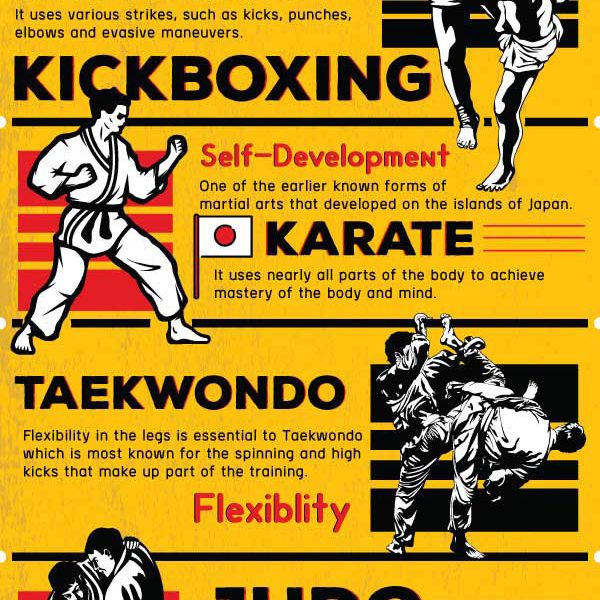Unraveling The Mystery Of Numerous Fighting Style Self-Controls: A Guide To Martial Arts, Taekwondo, And A Lot More
Unraveling The Mystery Of Numerous Fighting Style Self-Controls: A Guide To Martial Arts, Taekwondo, And A Lot More
Blog Article
https://kameronhnsxb.blog4youth.com/33844192/the-importance-of-flexibility-in-fighting-style-instruction -Stender Weiner
Are you tired of sensation overwhelmed by the large globe of martial arts? With numerous styles to choose from, it can be simple to get shed in a sea of punches, kicks, and mystical names. But worry not!
This discussion will demystify the various fighting styles designs, taking you on a trip from the effective strikes of Martial arts to the dynamic kicks of Taekwondo. Prepare to discover the beginnings, strategies, and approaches behind these old art kinds.
So, tighten your belt and prepare to start an informing exploration right into the captivating globe of martial arts.
Origins of Martial Arts Styles
The origins of martial arts styles can be traced back to ancient worlds and their demand for protection and battle methods. Throughout history, different societies developed their own one-of-a-kind techniques of fighting, each with its own collection of methods and ideologies.
In China, as an example, fighting styles styles such as Kung Fu and Tai Chi were created as a way of self-defense and boosting physical and psychological wellness.
In Japan, the samurai warriors created designs like Karate and Judo, focusing on self-control, precision, and mastery of the body.
Likewise, in Korea, Taekwondo became a fighting style stressing high kicks, quick activities, and mental fortitude.
These very early human beings laid the foundation for the diverse variety of fighting styles styles that exist today, each with its own abundant background and social relevance.
Strategies and Educating Techniques
To grasp martial arts designs, specialists need to find out different methods and training techniques.
Strategies are the details activities and activities utilized in combat, such as punches, kicks, throws, and blocks. Different martial arts styles have their own one-of-a-kind collection of techniques that experts must grasp via strenuous training.
Training techniques differ relying on the design, yet they generally involve a combination of physical conditioning, drills, sparring, and types.
Physical fitness is vital to build strength, versatility, and endurance. Drills assist professionals refine their techniques and enhance their speed and precision.
Competing enables experts to practice their techniques in a managed, reasonable environment. Types, also called kata, are prearranged series of activities that assist specialists establish muscle mass memory and emphasis.
Philosophies and Principles
Discovering the approaches and principles of fighting styles styles can provide you with a deeper understanding of your picked self-control. Each fighting style has its very own one-of-a-kind philosophy and set of guiding concepts that form the method it's exercised.
For instance, Martial arts stresses self-control, respect, and self-control. It educates professionals to concentrate their minds and bodies, enabling them to defend themselves while keeping a sense of internal peace.
On https://www.taipeitimes.com/News/feat/archives/2016/08/10/2003652809 , Taekwondo puts a solid focus on speed, dexterity, and flexibility. Its concepts are rooted in the tenets of courtesy, integrity, willpower, self-control, and indomitable spirit.
Final thought
Now that you have actually explored the origins, methods, and viewpoints of numerous fighting styles styles, you have a much deeper understanding of these ancient self-controls.
Picture a young karate pupil, exercising with steadfast resolution and emphasis, appearing boards with an effective punch.
Their trip showcases the dedication and toughness called for to master a martial art, advising us that with discipline and determination, anything is feasible.
